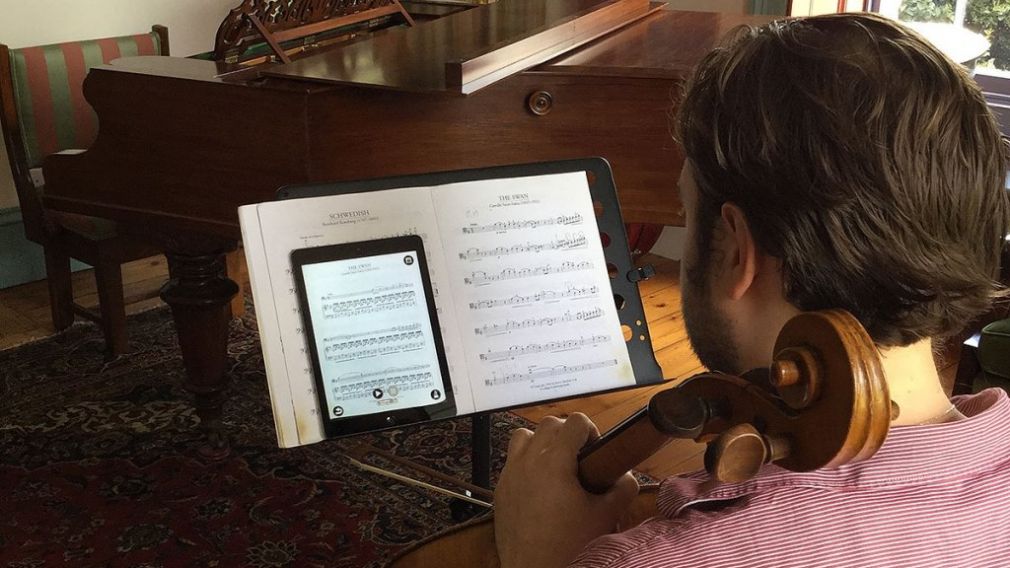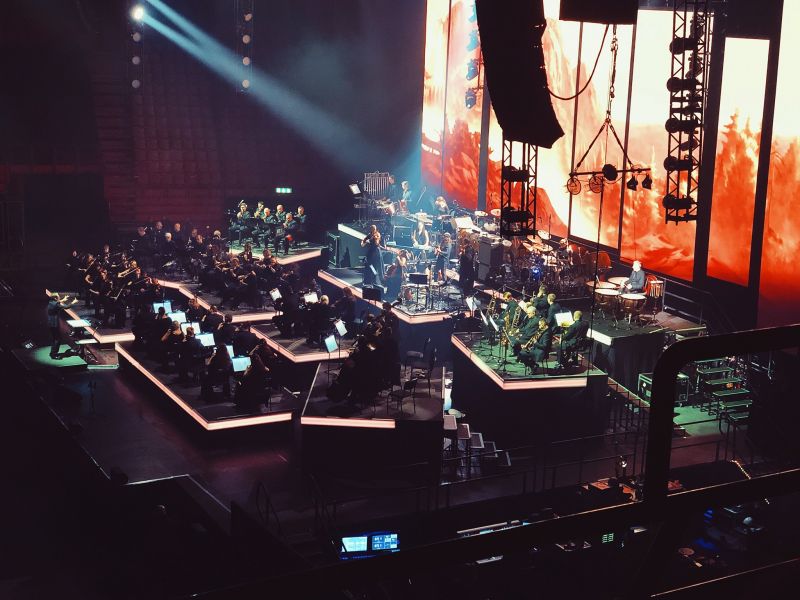Mobile Application Aids Musicians of All Skill Levels

PlayScore 2 is an application that allows users to use their mobile device or tablet’s built-in camera to capture sheet music, enhancing the musician's experience with a particular piece of sheet music by opening opportunities for engagement with the arrangement.
The app was designed with the goal of helping musicians and music teachers alike convert music notation into an electronic form through Optical Music Recognition (OMR). Users take a photo of a score, and PlayScore 2 processes the sheet music and begins playback of the piece. The app also allows the manipulation of tempo and the instruments’ playback, volume, and key. Changing these settings allows users to create a track within the app that acts as an accompaniment, perfect for practicing and creating a more robust performance. The possibilities available in the app are seemingly limitless, as demonstrated in the full tutorial video below.
We spoke with Anthony Wilkes, PlayScore 2's CEO and Marketing Manager Dr. Annabella Lee, to get an in-depth look at the exciting new application.
What inspired the creation of PlayScore 2?
PlayScore 2 was designed to make all kinds of sheet music accessible to anyone, regardless of their ability to read music. Music reading skills often act as a barrier to people who otherwise are gifted musicians. We wanted people to be able to snap-and-play sheet music with an easy-to-use app - without all the difficulties of traditional music scanning applications. Before PlayScore 2, sheet music scanning existed but it involved desktop computers and scanners and was followed by a need to edit the results. This was just too difficult for someone who only wants to know ‘What does this sound like?’ PlayScore 2 gives an immediate natural-sounding playback with articulation, dynamics, and expression.
What was the biggest challenge in creating the app?
PlayScore 2 is a spin-off from something we have been working on for more than a decade. In another part of our business, we offer a license for an Optical Music Recognition (OMR) kit that allows outside developers, music publishers, and others to build music recognition into their products. It is surprising how many uses exist for OMR and interest in OMR in the research community.
This globally-preferred music notation reading system is ReadScoreLib, and PlayScore 2 was created as a tool for its demonstration. We felt that a simple app would be a great way to showcase the system's capabilities. Despite the app’s success as a demonstration tool, it wasn’t long before we realized the full potential for an app that could play music from a photo and PlayScore 2 was born.
On the technical side, there are numerous challenges. Music is highly-varied, ranging from a simple tune to a Wagner opera. Songs, piano music, band music, chamber music, and orchestral all have different conventions and idioms. In addition, over the last three centuries music has been produced by thousands of publishers worldwide, each with their house styles and individual ways of doing things. When reading music, a person is involved in a highly-intelligent activity that takes years to learn. To do the same thing with a computer requires a level of machine vision that has only recently become possible. Reading music isn’t just a matter of playing one note after the other. Real music is often incomplete, leaving much implied. The music of real composers leaves a lot to the experience and intuition of the player. All this needs to be figured out by the software - not to mention deciphering the symbols themselves and the musical syntax.
I read a review that PlayScore 2 became a tool for blind musicians. Can you comment on what it means to the team to reach musicians who struggle to read traditional sheet music?
It is thrilling to hear the uses of PlayScore 2 by musicians of all experiences and backgrounds. PlayScore 2 is very helpful for blind musicians because they can use the app with a voiceover. Another one of the unique features of the application is its ability to export a scan of your sheet music, which can be imported into Braille music transcription software. One of our users has said this is revolutionary for blind musicians who play in an ensemble and it has given her access to a vastly greater range of music.
Outside of serving musicians who may be visually-impaired, PlayScore 2 is an invaluable tool for people who don’t read standard music notation. Users can hear music just by taking a photo, making it possible for teachers to introduce notation to students who have always played by ear.
What advice would you impart to someone looking to develop and launch an app that serves musicians?
If you have a good idea, go for it! There has never been a better time to create an app for musicians as people now become accustomed to the ‘new normal’ of hybrid music-making. Just remember, the music app market is extremely crowded, with many freelance music educators, music learning products, and companies all competing against each other to sell their apps.
It’s essential to know who your specific target audience is and what your unique selling proposition compared to other apps. In the case of PlayScore 2, the app appeals to several groups of people - it is an accompanist, a singing or instrumental teacher, a way of analyzing, orchestrating, and transcribing music. If there is one thing in common, PlayScore 2 brings notated music to people at all levels of sight-reading ability.
Making a music app is a big undertaking. It takes years of work and a massive investment. To have a successful music app today, you need something tangibly better than established apps at a given task or completely new – something no one has thought of before.
Finally, dream big! If you have an idea for an app you feel can work and you’re willing to put the time and effort into making it happen, there should be nothing stopping you.

For more information on PlayScore 2, please visit them at https://www.playscore.co/.